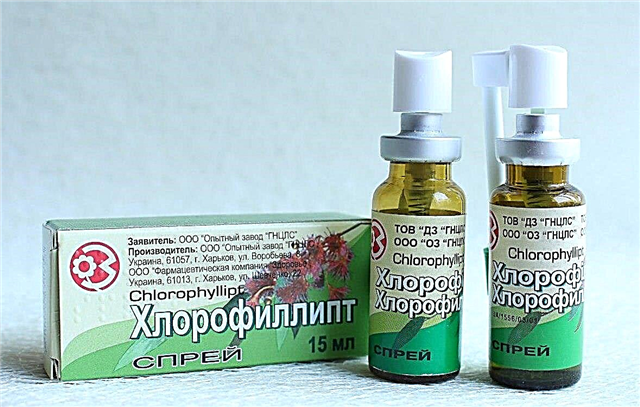Every mother is worried about the topic of child nutrition. How to feed your baby? When to start complementary foods? How to properly organize your diet? All these numerous questions arise from all parents. Due to the limited time, the pediatrician at the clinic visit is not always able to answer these questions. The conversation is usually short and uninformative. Therefore, the answers to all questions about the nutrition and menu of a child at 9 months can be found in this article.
How to feed a baby at 9 months
The question of the menu for a child at 9 months of age is most acute. Complementary feeding has already been introduced, he receives more products regularly. Therefore, mothers are interested in how they can diversify their food?
How mature is the digestive system of a 9 month old baby
Some parents are in a hurry to transfer their child to the "adult" table. But there is no need to rush, because there is a danger of harming the baby's digestive system. By 9 months, the gastrointestinal tract is not fully developed. Despite the fact that by this time the crumbs had a sufficient number of teeth, it is extremely careful to introduce solid food.
The stomach of a 9-month-old child takes a position close to that of an adult. But the secretory function still remains underdeveloped. As well as the enzymatic system of the liver and pancreas. The child's intestines are also unable to assimilate a large amount of substances.
You cannot "overload" the child's gastrointestinal tract with new products.
What foods are required in the diet of a 9-month-old baby
Before deciding which foods are new for a baby, it is important to understand what a baby should eat by 9 months of age. As a rule, complementary foods are started at the age of 4.5 - 6 months. Starting with either homogeneous dairy-free porridges or green monocomponent vegetable purees.
After the introduction of cereals and vegetables, meat puree is gradually introduced. Then you can start trying fruit purees and juices. As complementary foods are introduced, depending on the presence of allergic reactions, you can try milk porridge. It is important to add yolk, vegetable and butter to the main products.
Observe the correct amount of food consumed. During a snack, the baby may be offered crackers or cookies. Then you should try to give fish puree, as well as kefir and cottage cheese.
Each new product should be introduced gradually over the course of a week. Parents are encouraged to monitor their child's reactions to each new product. The appearance of a rash on the baby's skin is a sign that it is worth stopping taking this product for a while.

What absolutely should not be given to a child at 9 months
It is strictly forbidden to give a child under one year old whole cow's milk!
We compose a menu for a child at 9 months from "ready-made" products
A ready-made menu for a child at 9 months is a "magic wand" for parents. Children under one year old are advised to consume industrial products, as they are safe and enriched with essential vitamins and minerals. Everyone chooses the firm of the "finished" product, taking into account the individual characteristics of the baby's organism. From 9 months old, the child can be offered food with small pieces to develop chewing skills.
Breastfed baby and artificial baby
The menu for breastfed babies and “artificial babies” differs slightly. The differences are only in the morning and evening feeding.
Examples of menus for children 9 months old:
- First morning feeding - breast milk or adapted milk formula 200 ml;
- Breakfast - milk porridge with fruits or berries 180 g, 1/2 part yolk, fruit juice 30 ml;
- Dinner - meat puree 70 g, vegetable puree 130 g, fruit juice 40 ml;
- Afternoon snack - biscuits 5 g;
- Dinner - fruit puree 130 g, cottage cheese 50 g + supplementary feeding with breast milk or an adapted milk mixture;
- Feeding before bed - breast milk or adapted milk formula 200 ml.
Give cottage cheese no more than 50 g per serving, no more than 2 times a week.

We cook ourselves
The right choice of products
For residents of rural areas, it is easier to find quality products for preparing complementary foods. A mother who has grown vegetables and fruits in her garden can be sure of their safety. In other cases, you should buy food in trusted places. When buying, you should pay attention to the appearance of the product, and also try to take seasonal products.
Before cooking, the product should be thoroughly rinsed with running water using special children's detergents for washing vegetables and fruits. It is also important to rinse the meat before cooking. If mom wants to cook soup, then you need to cook it in secondary broth.
Rules for the culinary processing of foods for babies
Products must be brought to full readiness. Then it should be crushed to the desired consistency, it is important to leave small pieces that the crumb can chew.
Dishes for cooking and feeding
Cooking and feeding utensils should be clean, preferably new, and used only for the baby. You need to wash the dishes with a special detergent that can be used from 0 months.

How to diversify the baby's menu at 9 months
The diet of a child at 9 months is already quite varied. But do not forget that you can create a unique menu every day. For breakfast, corn, buckwheat, rice, oatmeal is suitable. You should not get carried away with manna, because there is nothing valuable in it, except for carbohydrates.
It is allowed to add a variety of fruits and berries to the porridge. But do not forget about the allergic reaction that may occur to this or that new product. Any meat at 9 months is allowed (turkey, chicken, beef, veal, pork, rabbit). It can be used as a puree or as small meatballs. Mashed vegetables are suitable for a side dish.
At 9 months, in addition to green vegetables, you can enter potatoes, carrots, pumpkin. Fruit is also almost all already consumed at this age. They can be given to the baby in the form of mashed potatoes or through a nibbler (a special device with a mesh to prevent solid pieces from entering the mouth). Compotes, juices, kefir are suitable as a drink. Curd can also be mixed with fruits or berries.
Eat watermelons and melons with caution due to the high risk of poisoning.

How to understand that a baby's diet at 9 months is well chosen
If the answer to the question of how to feed a child at 9 months has already become clear, then it is more difficult to understand that the baby is eating up and the food is absorbed well. A child at this age may develop taste preferences. He may refuse some product. In this case, mom should wait with this product and introduce it a little later. The same algorithm of actions should be in the event of allergic reactions.
How the child will develop physically and neuro-psychologically depends directly on the nutrition of the child at 9 months. Children after 6 months have an acute lack of vitamins and minerals. Breast milk alone is not enough, therefore complementary foods are introduced. Late introduction of meat can provoke the appearance of iron deficiency anemia in a child.
Normal blood and urine tests indicate complete well-being in the baby's body. And also the district pediatrician calls for an appointment every month to assess physical development (measurement of height and body weight). At 9 months, the average body length for boys is from 71.11 cm to 74.48 cm, in girls from 69.44 cm to 73.95 cm. The body weight of boys is approximately equal to 8.97 - 10.24 kg, in girls - 8.52 - 9.71 kg.
The neuropsychic development of the child also depends on proper nutrition. A baby at 9 months can already distinguish strangers from his own, laughs. Some can already walk at the support, drink from a cup. Some individual syllables are repeated.
What foods can be introduced into the diet in the 9-10th month of a child's life
Basically all foods must be introduced to a 9 month old baby. An exception is cow's milk. Foods that have previously triggered allergic reactions can be reintroduced, but gradual use should also be considered.
And again about cow's milk
It is strictly forbidden to give whole cow's milk to a child under 1 year of age. It is at this age that almost 90% of allergic reactions develop to cow's milk protein. The danger of such reactions is that the mechanism for the development of severe allergic diseases, such as atopic dermatitis, bronchial asthma, and allergic rhinitis, can be triggered.
We compare ready-made lures and those prepared by mothers. What's better
Of course, industrial production should be a priority for moms. Because such products are thoroughly tested before being released on the shelves and, accordingly, are safe. And they are also enriched with all the necessary substances that are so important to the baby.

Conclusion
The nutrition of a child at 9 months should be complete and balanced. These requirements are met by "finished" industrial products. In turn, the actually cooked food cannot boast of this. In any case, everyone chooses for himself what and when to give to the child.



